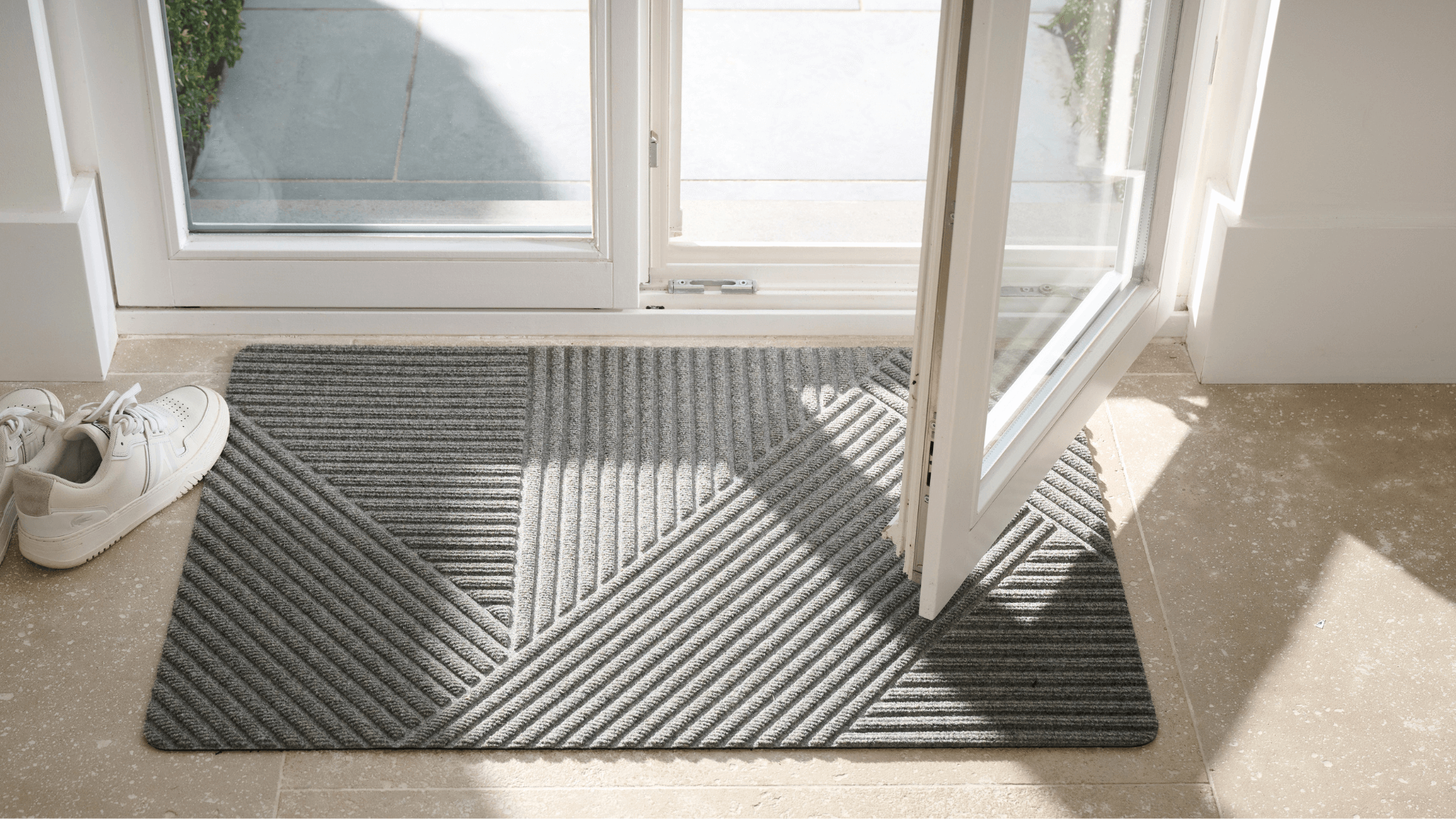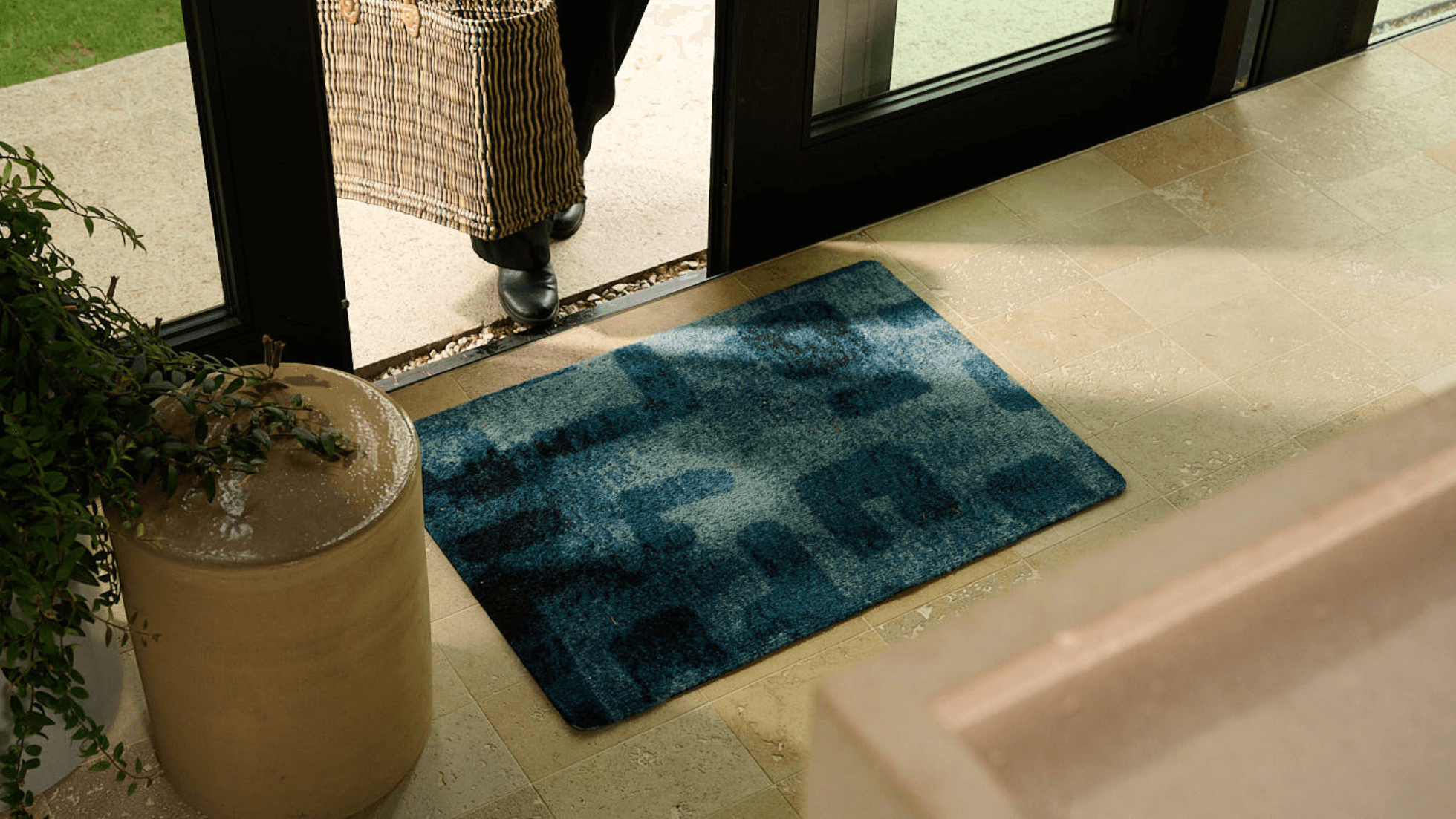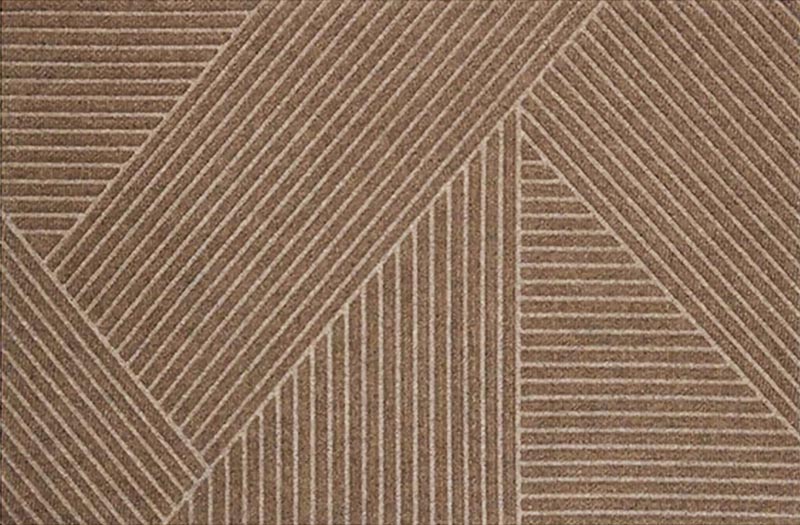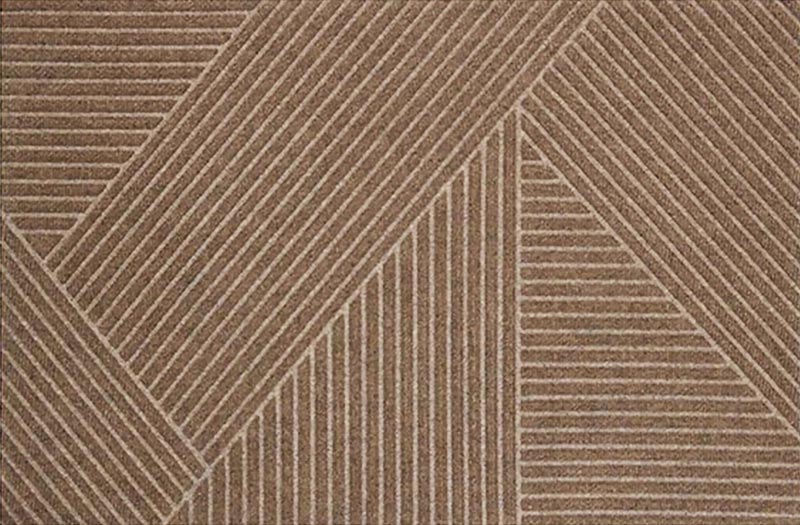Article: Why Your Indoor Doormat Isn't Working (+ How to Choose the Best One)

Why Your Indoor Doormat Isn't Working (+ How to Choose the Best One)
Our research has found that most homeowners don't maximize their indoor doormats' potential. A two-doormat system works best to maintain clean floors - a scraper mat outside paired with an absorbent mat inside. Your choice of indoor doormat extends beyond size or material. You need to understand how materials like coir and polyester work under different conditions.
Let us help you choose the best doormat that works for your specific needs. Your current indoor doormat might not protect your floors adequately. We'll show you everything from washable options to large indoor mats that can reduce your cleaning time and protect your floors better.
Before we get into it check out our article here first: Why Interior Designers Love These Trendy Door Mats (And You Will Too)
Why Do Indoor Doormats Fail to Keep Floors Clean?
Indoor doormats often fail at keeping floors clean because they lack key features or have common design flaws. Research shows that outdoor sources contribute to one-third of household dust and grime. A single season's worth of foot traffic can bring several kilograms of dirt into homes.
PVC-Backed Mat Issues
PVC-backed mats create more problems than they solve. These mats slide around on floors and become safety hazards instead of preventing them. The mats also tend to curl up over time, which makes them trip hazards and reduces their ability to trap dirt.
Size and Placement Challenges
The biggest problem with doormats is that they're too small. Entrance mats in public or commercial buildings need to be at least 3.6 meters long to work properly. Door clearance limits often force people to choose thinner mats that aren't as effective.
Material and Design Flaws
Natural rubber mats are durable but leave marks on hard surfaces. Lightweight mats become dangerous as they slide around and flip up at the edges. Common problems include mats that:
- Leave scratches on floors when placed on dirty surfaces
- Cause flooring discoloration through color transfer
- Form bubbles and ripples from poor installation
- Start making rattling sounds as they age
Maintenance Oversights
Doormats become less effective at keeping floors clean as they collect debris. People don't usually wipe their feet when entering, which makes proper mat maintenance a vital part of floor care.
Water Management Problems
Indoor doormats need the right absorbency levels based on how much they're used. High-traffic areas need mats that can hold large amounts of water. Waterlogged mats become inefficient and can't trap additional dirt or water.
Material Compatibility
Aluminum mats work best indoors because they lack proper slip resistance and let water pool on top. Fabric and carpet materials break down quickly when they get too wet.
What Makes the Best Indoor Doormat?
A great indoor doormat needs several features that work together to keep your home clean and safe. Rubber-backed mats stand out as the best choice because they grip well on floors of all types and stay put in busy areas.
Material Matters
Recycled PET fiber surfaces are excellent at trapping moisture and debris from shoes and dry quickly even in bad weather. These mats work great and support green practices through eco-friendly manufacturing.
Cotton and microfiber mats can hold up to seven times their weight in water. All the same, cotton mats might get packed down and lose effectiveness as time passes, and they could trap unwanted odors and bacteria.
Safety Features
The best indoor doormats should have:
- Non-slip rubber backing that keeps them stable
- Beveled edges so no one trips
- Low-profile design that clears doors easily
- Coarse surfaces to boost grip
Durability and Maintenance
Quality synthetic fiber mats made of nylon, polyester, and PET usually last 3-5 years if you take care of them properly. You might want to look at machine-washable options that stay effective with regular cleaning.
Air Quality Benefits
Good indoor doormats substantially improve your home's air quality by catching allergens before they spread around. Microfiber mats are especially good at blocking irritants, which makes them perfect for homes where people have allergies.
Comfort Considerations
The best indoor doormats do more than just clean - they make you comfortable too. Look for:
- Cushioning that fights fatigue
- Soft surfaces that support your feet
- Antimicrobial features that stop mold growth
Size and Placement
Your best bet is to pick the biggest mat that fits your space. Using two mats together - a scraper mat with an absorber mat - gives you the full cleaning power you need. The core spots for rubber-backed mats are busy areas like entryways, garages, and mudrooms where they can trap dirt most effectively.
Which Indoor Doormat Should You Choose?
Your choice of indoor doormat should match your needs and location. You need to think about what you want the mat to do - should it trap dirt, soak up water, or handle both tasks?
For High-Traffic Areas, mats made from recycled PET, nylon, or rubber work best when people walk over them constantly. These materials shine in busy spots like:
- Entryways leading from garages
- Mudroom entrances
- Main doorways
Size and Placement Considerations
A good mat should cover your door's width and stick out at least 18 inches from the threshold. The best setup uses two mats - one outside for scraping and another inside to soak up moisture.
Maintenance Requirements
You should think about the time needed for upkeep. Some mats need:
- Regular hoovering
- Machine washing
- Spot cleaning
Budget Considerations
Quality makes a difference - budget mats under £15.88 often disappoint. A better-quality mat proves more budget-friendly because it:
- Stays useful longer
- Does a better job
- Needs fewer replacements
Style and Function Balance
Coir, fabric, or jute doormats add character during dry seasons. But year-round protection calls for weather-resistant options that:
- Handle water well
- Stay in place
- Dry fast between uses
Note that darker colors with flecks hide dirt better, which works great for busy homes.
The Bottom Line: Investing in Your Entryway
A good indoor doormat might look like a simple purchase, but research shows homeowners often overlook important details. The best setup combines two mats - a tough scraper mat outside and an absorbent indoor mat that traps leftover moisture and debris.
Your mat's performance depends heavily on the materials used. Cotton excels at absorption and PET gives you durability, but microfiber proves to be a versatile choice, particularly in homes with lots of foot traffic. Darker colors and subtle patterns hide dirt more effectively, which works great for busy entryways.
The mat's size plays a crucial role. It should cover your doorway's width and reach at least 18 inches inside. Premium doormats might cost more initially, but they outlast and outperform cheaper options that you'll need to replace more often.
Your ideal indoor doormat depends on your household's lifestyle and specific requirements. You could choose a washable microfiber mat that's easy to maintain or a stylish cotton blend that works well in areas with less traffic. The right balance between function and durability matters most. A carefully selected doormat not only protects your floors but also creates an inviting entrance and keeps your home clean and healthy.
Before you head out check out our article here first: Why Interior Designers Love These Trendy Door Mats (And You Will Too)




